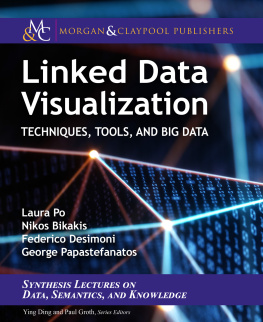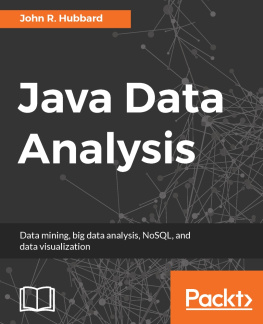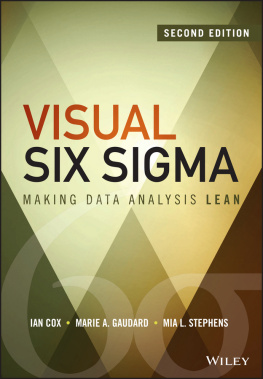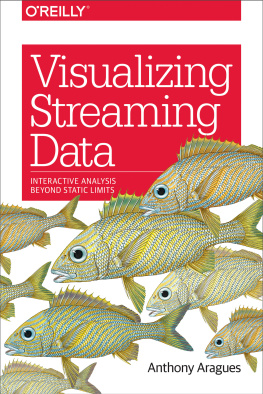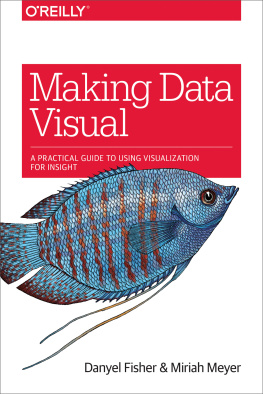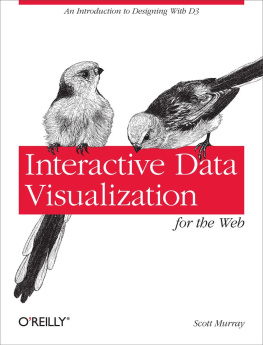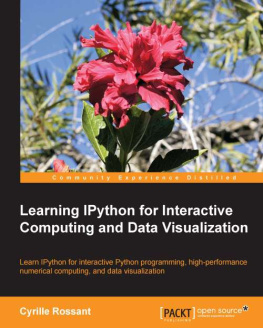Contents
Page List

Interactive Visual Data Analysis
AK Peters Visualization Series
This series aims to capture new developments and summarize what is known over the whole spectrum of visualization by publishing a broad range of textbooks, reference works, and handbooks. It will contain books from all subfields of visualization, including visual analytics, information visualization, and scientific visualization. The scope will largely follow the calls of the major conferences such as VIS: techniques, algorithms, theoretical foundations and models, quantitative and qualitative evaluation, design studies, and applications.
Series Editor: Tamara Munzner
University of British Columbia, Vancouver, Canada
Visualization Analysis and Design
Tamara Munzner
Information Theory Tools for Visualization
Min Chen, Miquel Feixas, Ivan Viola, Anton Bardera, Han-Wei Shen, Mateu Sbert
Data-Driven Storytelling
Nathalie Henry Riche, Christophe Hurter, Nicholas Diakopoulos, Sheelagh Carpendale
Interactive Visual Data Analysis
Christian Tominski, Heidrun Schumann
For more information about this series please visit: https://www.crcpress.com/AK-Peters-Visualization-Series/book-series/CRCVIS
Interactive Visual Data Analysis
Christian Tominski
Heidrun Schumann
CRC Press
Taylor & Francis Group
6000 Broken Sound Parkway NW, Suite 300
Boca Raton, FL 33487-2742
2019 by Taylor & Francis Group, LLC
CRC Press is an imprint of Taylor & Francis Group, an Informa business
No claim to original U.S. Government works
Printed on acid-free paper
International Standard Book Number-13: 978-1-4987-5398-2 (Hardback)
978-0-3678-9875-5 (Paperback)
This book contains information obtained from authentic and highly regarded sources. Reasonable efforts have been made to publish reliable data and information, but the author and publisher cannot assume responsibility for the validity of all materials or the consequences of their use. The authors and publishers have attempted to trace the copyright holders of all material reproduced in this publication and apologize to copyright holders if permission to publish in this form has not been obtained. If any copyright material has not been acknowledged please write and let us know so we may rectify in any future reprint.
Except as permitted under U.S. Copyright Law, no part of this book may be reprinted, reproduced, transmitted, or utilized in any form by any electronic, mechanical, or other means, now known or hereafter invented, including photocopying, microfilming, and recording, or in any information storage or retrieval system, without written permission from the publishers.
For permission to photocopy or use material electronically from this work, please access www.copyright.com (http://www.copyright.com/) or contact the Copyright Clearance Center, Inc. (CCC), 222 Rosewood Drive, Danvers, MA 01923, 978-750-8400. CCC is a not-for-profit organization that provides licenses and registration for a variety of users. For organizations that have been granted a photocopy license by the CCC, a separate system of payment has been arranged.
Trademark Notice: Product or corporate names may be trademarks or registered trademarks, and are used only for identification and explanation without intent to infringe.
Visit the Taylor & Francis Web site at
http://www.taylorandfrancis.com
and the CRC Press Web site at
http://www.crcpress.com
To the Rostock
visualization group.
Contents
Big Data has attracted much attention. Many examples are given in the news how new data-driven applications and algorithms provide new insights, enable more effective and efficient operation, and support experts in a wide variety of application domains. This suggests that getting value out of data is easy, but practitioners in the field know better. Obtaining novel, actionable insights from large and complex data is hard work. In many cases, the human in the loop is indispensable to find unexpected relations, to judge if there is true value in the data and to check if results are valid, as a human is needed to bring in both deep domain expertise and common sense. How to bring the human in the loop?
One route is to use visualization: translate data into images and take advantage of the incredible strength of the human visual system, enabling the viewer to detect patterns quickly and leading to deep insights. However, visualization has its limits and for instance larger datasets quickly lead to cluttered images, like the hairballs that result when networks with more than a hundred nodes are visualized. An important next level is to bring in interaction: enable people to select the data they are interested in. When carefully designed, such interactive visualization systems enable exploration of much larger datasets. But, how to find relevant relations in collections of millions of items, with hundreds of attributes? Statistics, machine learning, and data mining provide many analysis methods geared towards finding patterns and correlations automatically, but such analysis methods inevitably also lead to reduction and possibly the loss of vital information. The credo of Interactive Visual Data Analysis, also known as visual analytics, is therefore to use a combination of visualization, interaction, and automated analysis methods to explore huge amounts of data and to obtain solid insights.
Problem solved? Unfortunately not. The design of effective systems for visual data analysis is far from trivial, and requires a wide variety of know-how, skills, and experience. Besides pure technical skills, many other aspects are relevant. For each element of such a system a wide variety of alternative solutions are available, selecting the most suitable requires a thorough understanding of their strengths and limitations. When standard solutions do not suffice, creativity is needed to find new methods or ingenious combinations of existing ones. And, above all, development of such systems is a design process, having a deep understanding of this process and dedication to the needs and wants of the prospective users is essential.
I teach students to develop interactive systems for visual data analysis. And, I struggle with this. Should I guide them through the complete zoo of all different visualization, interaction, and analysis techniques, for all kinds of different data? That would lead to a very lengthy and not really exciting course. What I really missed is a compact textbook that provides an overview of interactive visual data analysis: a book that guides through the design process, discusses the supporting disciplines and how they fit together, and gives examples of more advanced topics.
When Christian Tominski and Heidrun Schumann wrote me that they had prepared such a book, I was very excited, and even more when I read it. This book really fills a gap. There are of course many texts on visualization, interaction, and data analysis, all with their own angle, but an integrated overview is rare, whereas I think that the real magic comes from the combination. The authors have an extensive experience in doing research in visualization and developing real-world solutions for real-world problems, and that shows. Many examples come from their own work and give us an opportunity to look over the shoulders of experts. They have a broad experience with many different topics and areas, and have attacked many complex cases, such as dynamic geo-spatial data. I therefore expect that many readers can take direct advantage of the ideas, solutions, and examples given.


